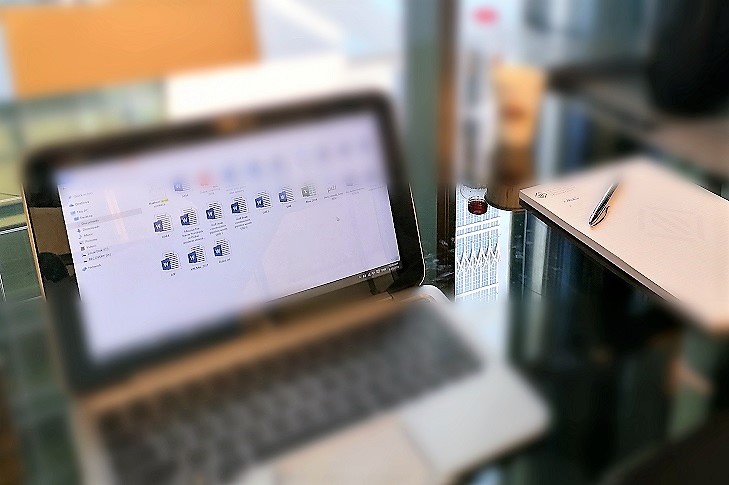The Top 100 Banks survey ranks lenders in terms of Tier 1 capital, made up of their capital + reserves + retained earnings + minority interests. The figures in local currencies are converted into US dollars at the FX rates on 31 December 2018. In mos...
The Top 100 Banks survey ranks lenders in terms of Tier 1 capital, made up of their capital + reserves + retained earnings + minority interests. The figures in local currencies are converted into US dollars at the FX rates on 31 December 2018. In most cases the survey draws on latest results available when we compiled the data, which comes from Bankers’ Almanac and from African Business inhouse research. Some banks have been excluded because data is old or information is unreliable.
South African banks continue to dominate Top 10
Despite the decline of the rand and the sluggish state of the South African economy, Standard Bank Group remains top of our ranking and four other South African banks accompany it in the top 10.
South African banks still dominate the top of our rankings with five of the top 10 originating from there. They are facing contenders from Morocco and Egypt and this reveals to some extent the changing growth dynamics across African markets. The sluggish state of South Africa’s economy was reflected in a 14% decline in the dollar-rand exchange rate between December 2017 and 2018, adversely impacting the banks’ earnings once converted to US dollars.
As a result, Attijariwafa Bank (#4) and National Bank of Egypt (#5) crashed into the top tier, pushing South Africa’s Nedbank down to #6.
The total capital (tier 1 capital made up of the total of capital + reserves + retained earnings + minority interests, expressed in dollars) of Africa’s 100 biggest banks was 4% down at $101.6bn, compared to the record $105.4bn in 2017, after a 21% surge compared to 2016. Total assets under management at the top 100 banks climbed 2.8% to $1.22 trillion (from $1.19 trillion) compared to 2018 survey. Total revenues rose 10.2% to $19bn from $17.2bn.
By comparison with the South African rand, the FX conversion rates for the Egyptian pound, Nigerian naira and Moroccan dinar were relatively stable and the Kenya shilling strengthened by 1.4%, supporting the performance of banks in those countries when their figures are translated into dollars.
There is growth in many African economies, and in their leading banks. This is evidenced by the rising cut-off level of capital at which bank #100 joined the table. This year dynamic Rwanda made its first appearance in the ranking after Bank of Kigali entered at #100 with tier 1 capital set at $189m. Last year’s smallest bank in the top 100 made the cut with capital of $175m and in 2017 it was $130m.
Vibrant banks in Africa face similar challenges to banks in advanced and emerging economies, as highlighted in accountant PwC’s global banking surveys. These include where to find profitable growth, how to contain costs, especially as technology becomes a key race, and the increasing impact of regulation on banking business models. Africans are coming up with competitive solutions, including technology as an enabler to reach out to the unbanked and cross-border synergies.
Africa’s leading banks, particularly in East Africa, have years of experience of using technology as their edge to outcompete international and slower-moving banks. Non-banking competitors have been a threat for several years as customers demand more service and value, but the established banks score higher on trust and are often as good as new rivals when they turn to mobile money and technology, outreach to smaller businesses (SMEs) and expanding financial inclusion to fuel their next phase of growth.
Standard Bank Group still far ahead
Top place in the ranking still goes to South Africa’s Standard Bank Group, which is far ahead of even the second-placed bank in terms of tier 1 capital. However, its soaring growth of previous years turned into a decline of 10% as capital fell back 10% from $13.2bn at the end of 2017 to $11.9bn a year later – however this is still a gain in rand. Total assets declined by a similar amount to $147.7bn and net profit was down to $2.3bn, with the ongoing growth achieved against a difficult banking and economic environment and partly swayed by earnings outside South Africa – Standard Bank has operations in 20 countries across Africa. It beat its strong return on equity (ROE) performance of last year, this year scoring an excellent ROE of 19.1%.
Absa climbed to #2 in this year’s bank ranking from last year’s #4 with capital of $5.3bn. It is still busy with restructuring, after Barclays Bank sold Absa Group shares equivalent to 12.2% of the total in 2016 and 33.7% in 2017, leaving some 85% of the bank’s shares widely held on the Johannesburg Stock Exchange (JSE). Total assets were $75bn and its profit bounced back to a healthy $557m.
Pushed back to #3, FirstRand saw capital decline to $5.1bn, down 3% from $5.3bn in the 2018 survey when it was #2. Total assets climbed 6% to $87.6bn despite the falling currency, and net profits climbed strongly by 5% to $1.5bn. FirstRand continues to have a high return on equity of 29.2%, far ahead of the rest of the top 10 banks and even better than the previous year’s 26.9%.
According to a survey by accountant PwC (April 2019), the big South African banks’ results reflect growing earnings from the rest of Africa: “Overall, the major banks’ diversification strategies across franchises, regions and portfolios has been central to their ability to achieve growth amid difficult trading conditions. At the same time we expect the banks to be acutely focused on the continued evolution of their strategies in the context of heightened competition and the exciting digital journeys they are on – all of which focus on putting the customer at the heart of their business models.”
Strong 11% growth in capital to $4.7bn helped Attijariwafa Bank climb from #5 to #4, and total assets climbed a creditable 26% to $53.3bn. It has extensive operations across African countries, particularly in the Francophone zones. National Bank of Egypt remained close behind, with capital up 15% to $4.6bn and assets up 15% to $86.3bn.
Toppled from the top four was South Africa’s Nedbank, down from #3 to #6, although its capital was very close to that of the banks immediately above it. Total capital was down 10% to $4.6bn and assets down 8% to $67.5bn, although the declines are still less than the fall in the rand rate, indicating some growth in local currency.
The ranking stays steady for each of the banks ranked #7 to #12, although numbers for the top three Algerian banks are to December 2017, a year earlier than their banking rivals. The biggest gains in this group were those of South Africa’s Investec Bank, which increased its capital by 20% to $2.9bn in the year to March 2018, compared to the year before, pushed up total assets by 18% to $37.5bn and saw net profit climb 64% to $395m.
FirstRand continues to top the performance tables for the top 10 banks, with return on assets (ROA) of 1.7% and ROE of 29.2%. Only Capitec (steady at #22, the same ranking as in last year’s survey) manages to outperform among the bigger South African banks, with ROE of 32.3%. However, strong banking profits are relatively more common in Nigeria and Egypt where several banks achieved ROE of over 30% and Nigeria’s Guaranty Trust Bank, down from #18 to #25, scored ROE of 47%. Egypt’s Commercial International Bank achieved ROE of 38.9% and QNB Al Ahli achieved 33.6%.
Egyptian banks climb
Some of the top climbers in the rankings are Egyptian banks, as the country’s economic advance continue. Banque du Caire climbed from #63 in last year’s survey to #51. Its rise was fuelled by a 29% climb in total capital to $454m. HSBC Bank Egypt advanced even further, with a strong 46% rise in total capital to $436m pushing it up from #73 to #52. Mozambique’s Millennium Bim was another that climbed the rankings, soaring from #70 to #53 buoyed by 39% rise in total capital to $436m while assets climbed 26% to $2.4bn.
The top new entrant was another Egyptian bank, as Bank Audi entered the ranking at #80, with a total tier 1 capital of $256m. Nigeria’s Sterling Bank did far better than its troubled namesake currency, and entered the top 100 ranking at #81 with $244m in total capital. Other new entrants were Kenya’s Prime Bank (entering at #92 with capital of $212m), Société Générale Côte d’Ivoire entering at #93 with capital of $209m, Ecobank Ghana (#97 with capital of $202m) and Barclays Bank of Ghana (#99 capital of $194m).
How do Africa’s development banks perform?
The development banks are excluded from the African Business banking survey, but would be creditable performers if they were included. Total capital, reserves, retained earnings and minority interests at the African Development Bank was $9.9bn in the year to December 2017, which would make it a strong #2 in the Top 100 Banks ranking. It made $251.4m profit and had total assets of $46.4bn.
Afreximbank (African Export Import Bank) based in Cairo scored a massive $275.9m net profit in the year to December 2018. Its total capital was $2.3bn, sufficient to rank at #13 in the survey, and assets were $13.4bn. Nairobi-based TDB (formerly Trade and Development Bank and previously PTA Bank) scored $129.3m in profits on capital of $1.1bn and total assets of $5.6bn.
Less profitable was Kampala-based East African Development Bank which achieved $10.2m in profits for the year to December 2017 and had total capital of $251.1m and assets of $390.4m. Figures are not given for other development banks such as Development Bank of South Africa.
North Africa remains banking powerhouse
Four North African markets feature in the survey: 14 banks from Egypt in the table –more than any other country – nine banks from Morocco and eight each from Algeria and Tunisia.
Fourth biggest bank in the survey is Morocco’s Attijariwafa, with tier 1 capital of $4.7bn, up 11% to push it up the ranking from #5, and $53.3bn of total assets, up 26% on the previous year. It is a dynamic bank working in a positive environment, although Morocco’s large $121.4bn GDP has 3.18% growth forecast for this year as government, investors and business work together to create jobs and growth. The dirham has only weakened slightly against the dollar.
Morocco’s Banque Centrale Populaire is unchanged at #7 but has not had such a good year, with capital down 7% to $3.7bn and total assets up marginally to $41.5bn.
Egypt is the dominant economy, with GDP of $299.6bn and 2018 growth estimated at 5.3% in 2018 and forecast to climb to 5.5% in 2019 and to continue at 6% a year in following years. State-owned National Bank of Egypt shows the second fastest growth in capital in the top 10, with a 15% gain to $4.6bn, pushing it up from #6 in the ranking to this year’s #5. Total assets also grew by 15% to $86.2bn although net profit slumped 24% to $565m. Another Egyptian bank in the top 10 is Banque Misr, steady at #8, with capital up 9% to $3.4bn, assets up 14% to $49.4bn but a 50% fall in profits to $227m.
Two Egyptian banks are among the continent’s leaders in terms of return on equity. Commercial International Bank has ROE of 38.9% and climbs the ranking from #24 last year to #19 with capital up 17% to $1.4bn, total assets up 15% to $119bn and profits up 26% to $535m. QNB Al Ahli has ROE of 33.6% and climbs from #27 to #20, as capital climbs 25% to $1.2bn, assets to $14.4bn and profits push up 29% to $402m.
Figures from top Algerian banks on the ranking are generally a year behind other banks on the table, for instance financial results used for Banque Nationale d’Algérie are on the year to December 2017. It is steady at #9 with tier 1 capital up 7% compared to 2016 to reach $2.9bn, while assets slipped back 5% to $24.6bn and profits edged lower by 8% to $261m. Banque Exterieure d’Algérie, steady at #11 with a 8% gain in tier 1 to $2.6bn.
Tunisia’s economy is estimated to have grown at 2.5% in 2018 and is forecast for 2.7% in 2018. Banque Internationale Arabe de Tunisie managed to reverse its slide last year and regain its #37 ranking in Africa, boosting tier 1 capital by 4% to $578m. Banque Nationale Agricole continued to edge lower on the table, down from #48 to #50 as capital fell 4% to $459m.
Growth continues in the West and Central African region
The West and Central African region is up from 17 banks last year to 19 this year, with Nigeria contributing 12 of these, but the total capital is $13.6bn and total assets are $140.6bn.
Prospects are picking up for Africa’s biggest economy, which also has some of the continent’s most profitable banks. Nigeria, with $444.9bn in GDP, is buoyed by higher but volatile oil prices. The July World Economic Outlook statistics published by the International Monetary Fund estimates growth at 1.9% in 2018, double that of 2017, and forecasts 2.3% in 2019 and 2.6% in 2020.
Biggest bank in the region is Zenith Bank, ranked #13 in Africa with capital of $1.7bn (it is up from #14 last year despite a 4% decline in profit) and net assets of $16.8bn. Its net profit of $532m gives it a high 31.1% ROE. Second largest is First Bank of Nigeria, which on 2017 figures still ranks #16 with net capital of $1.6bn. United Bank for Africa is steady in the bank rank at #21, with capital down 7% to $1.2bn. It is followed by Access Bank, down from #19 to #24 this year.
One of Africa’s most profitable banks is Guaranty Trust Bank, with ROE of 47.1% and return on assets (ROA) of 5.6%. It has slipped down the ranking from #18 to #25 as capital slid 15% to $1.1bn, but net profit was $508m.
Togo’s Ecobank Transnational Incorporated is #17 on the continental ranking, down from #13 last year, as capital slumped 22% to $1.6bn even as net assets stayed steady at $22.6bn and profit soared 44% to $329m. It has the widest spread of any bank across Africa with operations in 36 countries. Ecobank Nigeria ranks #35 in the listing, up from #36 although capital fell 14% to $606m, and Ecobank Ghana is a new entrant at #97 with capital of $202m.
Senegal continues to have top ranking economic growth ranging from a low of 6.2% (2018) to 7.5% forecast for 2020 (and forecast to rise further to 11.6% in 2022). Bank of Africa Group represents the country in the top 100, up from #31 to #28 this year, with capital of $917m.
Côte d’Ivoire is also enjoying years of growth, forecast at 7.5% this year and 7.2% next year, after estimated growth of 7.4% in 2018. Its top bank, Société Générale Côte d’Ivoire, is a new entrant to the table at #93 with capital of $209m and profits of $72m, for ROE of 34.7%.
BGFI Gabon’s figures have not been updated since December 2016 and it ranks at #45 up from #49 last year, a sign of the declining tier 1 capital across much of the ranking. Ghana Commercial Bank flies the flag for the Black Star, up from #90 last year to #86 on capital of $230m, while Ghana also has two new entries to the top 100, Ecobank Ghana and Barclays Bank of Ghana at #99 with capital of $194m.
Africa’s Top Banks 2019 – West and Central Africa region
Ethiopia shows strong potential for profits
East African countries have strong growth records and prospects and the region is ranked one of the most promising parts of Africa for investors. The gateway to the region is still seen as Kenya, where competition remains hot among leading banks and many use bases there to expand across Africa.
The biggest bank in East Africa is state-owned Commercial Bank of Ethiopia, which ranks at #18 in the listing, down from #15 in 2018 survey after tier 1 capital fell 9% to $1.5bn and assets stayed fairly constant at $20.8bn.
Development Bank of Ethiopia, also state-owned, ranks #67 in the main table, although its figures have not been updated from last year, when the results to June 2017 were used.
Banks from across Africa and around the world are very interested in the potential for banking profits in Ethiopia. The $91.bn economy has regularly topped global tables for growth although it has slowed from 10.1% annual growth in 2017 to 7.7% in 2018, with the same forecast for 2019.
Most exciting for lenders and other investors is Ethiopia’s population, estimated at 108m, many of them young, coupled with the breakneck pace of reform undertaken by prime minister Abiy Ahmed, including prospects of liberalising the financial, telecoms and other sectors. Foreigners are still not allowed to own shares in Ethiopian banks, although in recent years this was relaxed for Ethiopians with foreign passports. However, banks have been opening representative offices and building relationships, including Kenya’s Equity Bank in May 2019.
Africa’s Top 100 Banks – East Africa Region
Kenya remains key market
The key East African banking market remains Kenya, which achieved 6% growth in local currency in 2018 and is forecast for 5.8% growth in 2019 with a heavyweight $99.2bn economy (measured by GDP at current prices). The region’s #2 is Kenya Commercial Bank (#29 in the continental ranking, up from #38, with growth in capital by 9% to $740m and assets up 13% to $6.1bn at December 2018). It is followed by Cooperative Bank of Kenya (#38 on the overall ranking, up from #42), then Diamond Trust Bank (#42, up from #51) and Equity Bank (#54, down from #52 as capital edged 3% lower to $430m and assets up 9% to $4.3bn, with very strong ROE at 38.4%).
All the leading banks are headquartered in Kenya while foreign-owned banks such as Standard Chartered, Barclays Bank and Stanbic Kenya are smaller by tier 1 capital and total assets. All of the banks have been chafing at a law that capped the interest rate on domestic lending. The effect has been to increase lending to lower risk borrowers, including T-Bills, and to slash funds available to small and medium-enterprises, while the banks also seek to boost non-interest income. Both KCB and Equity are in expansion mode outside Kenya.
Equity Bank Group chief executive James Mwangi says: “We’re going to be the largest bank in the Eastern and Central African region, with the possibility of expanding our balance sheet to beyond KSh1 trillion ($10bn) by the end of 2020.” The bank is finalising a $107m deal to buy a stake in Atlas Mara and take over its banking operations in Rwanda, Tanzania, Zambia and Mozambique. It is already in Kenya, Democratic Republic of Congo, Uganda, South Sudan and Ethiopia. In September 2019 it announced a deal to buy the Banque Commercial du Congo, the country’s second biggest bank, reinforcing its market share. It plans to be in 15 African countries by 2024.
KCB also wants to build to $10bn in assets by the end of 2022, and by mid-2019 was at $7.5bn. it has operations in Tanzania, Uganda, Rwanda, Burundi and South Sudan and as African Business went to press was still in process of taking over state-owned National Bank of Kenya which has assets of $1.1bn. Its next targets include Somalia, Mozambique and the DRC and it hopes to be in 10 African countries by 2020.
Prospects less bright in Sudan and Tanzania
Sudan’s Bank of Khartoum remains at #8 in the region, although that is probably because numbers have not been updated since Dec 2017, after which the country has endured political and economic meltdown and the currency has crashed against the dollar. It is a top Islamic Bank and privately owned.
Tanzania is another exception to the region’s rosy prospects. Growth expectations have dropped after 6.6% GDP growth in 2018, with relatively lower 4% forecast in 2019 on a $61bn economy. Tanzania’s National Microfinance Bank has climbed to #66 in the Africa ranking with capital up 5% to $329m, and CRDB Bank is #70 on the Africa ranking, with capital up 3% to $308m but net profit down 19% to $28m.
Addis Ababa, capital of Ethiopia, a country with bright prospects for banking profits.
South Africa’s depressed economy poses problems for banks
There are 25 banks from the region in the ranking, with total capital of $38.6bn, of which the seven South African banks contribute $31.4bn and the giant Standard Bank contributes $11.9bn. Investec (#10 in the ranking) has enjoyed 20% growth in capital to $2.9bn, 18% growth in net assets to $37.5m and 64% growth in profits to $395m. It is threatening to challenge its bigger rivals in corporate banking again.
Economic growth in South Africa, according to World Economic Outlook published in July, was estimated at only 0.8% for 2018 with a forecast for anaemic 0.7% economic growth in 2019 and only 1.1% growth in 2020. The economy has been held back by the struggle to improve national governance, strikes, poor farming conditions and energy disruption as state-owned Eskom remains in crisis.
The depressed economy makes it harder for new retail banks to challenge the existing banks. Tyme Bank launched in November 2018 and works on online and mobile only. It is reported to have 740,000 customers in September 2019 but to be struggling to make money and aims for break-even only in 2022.
Payments focused Bank Zero has delayed indefinitely its launch, which was previously scheduled for the second half of 2019. Discovery Bank, which bills itself as “the world’s first behavioural bank” launched in June, and is signing up thousands of customers a week. Capitec, #22 on the overall ranking with $1.2bn in capital, claims it has more customers than any of the big four rivals.
Most economies in the region are experiencing moderate growth of 4% or less, with the exception of Zimbabwe whose economy is forecast to slump by 5.2% this year.
Angola saw its economy shrink by an estimated 1.7% in 2018 and is forecast to achieve only 0.4% in 2019. Not surprisingly Angolan banks also exhibit volatility. Banco de Fomento Angola is the highest ranked, at #34 from last year’s #32, with capital down 32% to $608m. By comparison Banco BIC is on the ascendant, up from #50 last year to #36, on tier 1 capital up 24% to $593m. Banco de Poupança e Credito SA dropped on the rankings, from #23 to #40, with capital down a formidable 56% to $537m after enduring a net loss of $87m. This comes after a massive loss in 2017 which slashed capital from $1.4bn as at end of 2017.
The biggest bank outside South Africa is Mauritius Commercial Bank at #27 (up from #30) as capital grew 11% to $997m. It is one of five Mauritian banks among Africa’s top 100.
Original Source: https://africanbusinessmagazine.com/africas-top-100-banks/special-report-africas-top-100-banks-2019/




